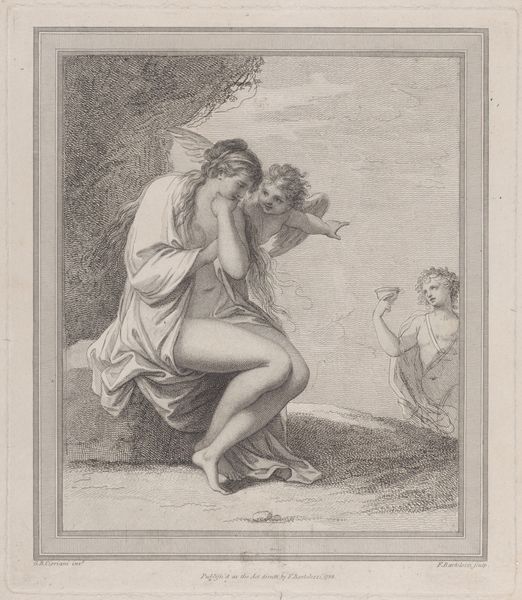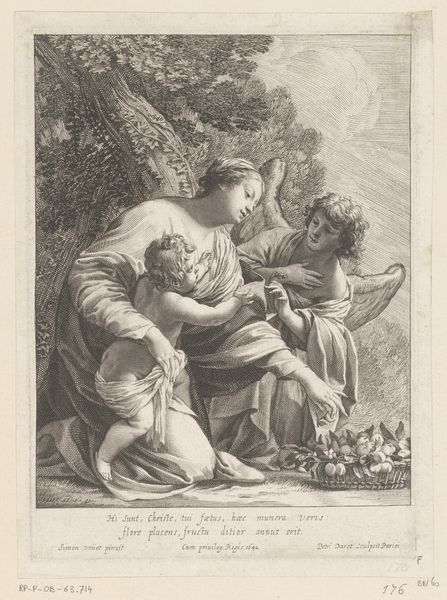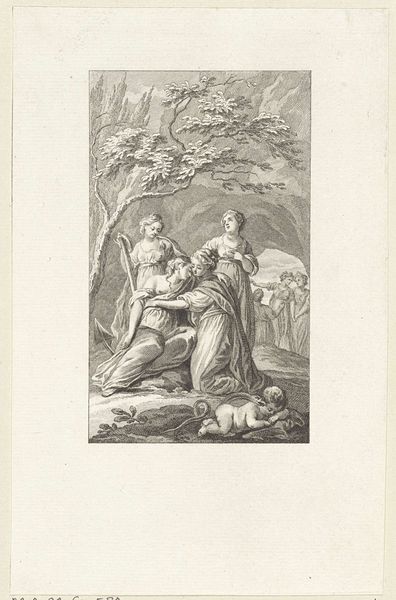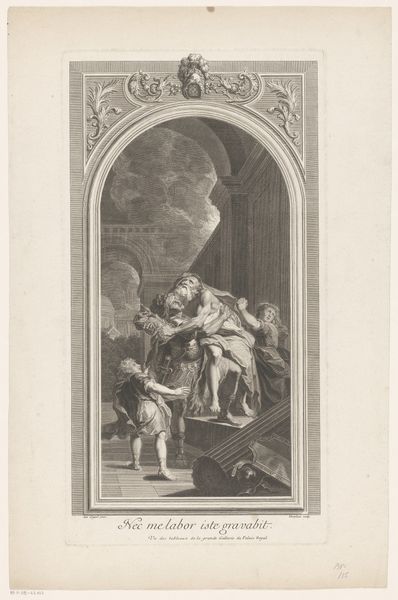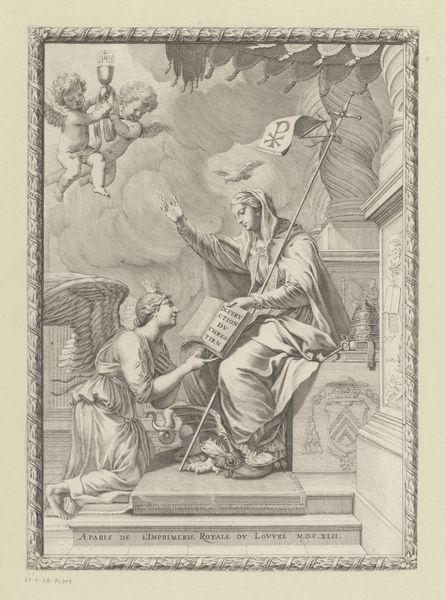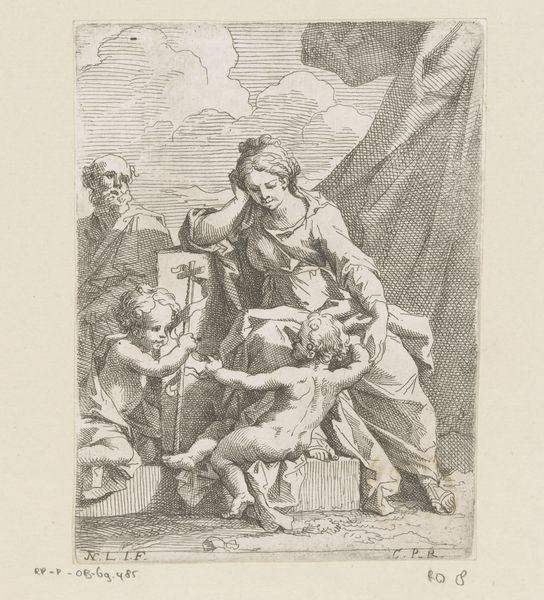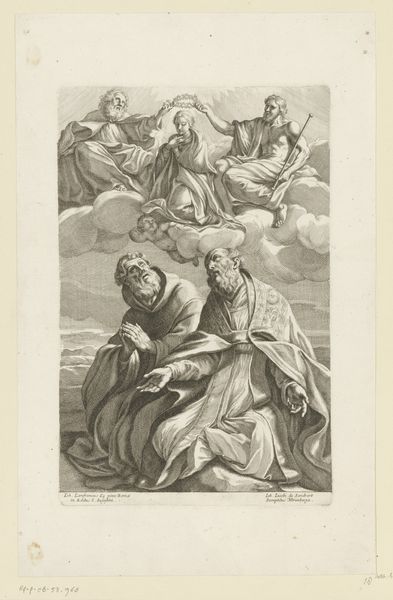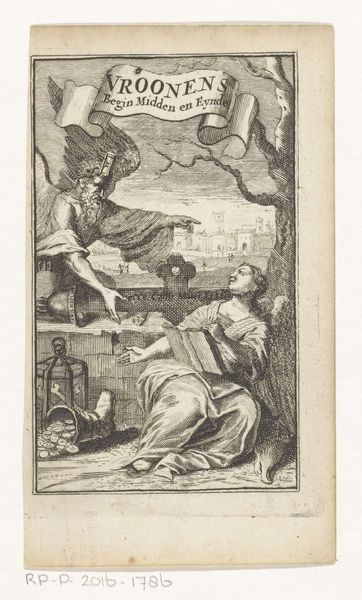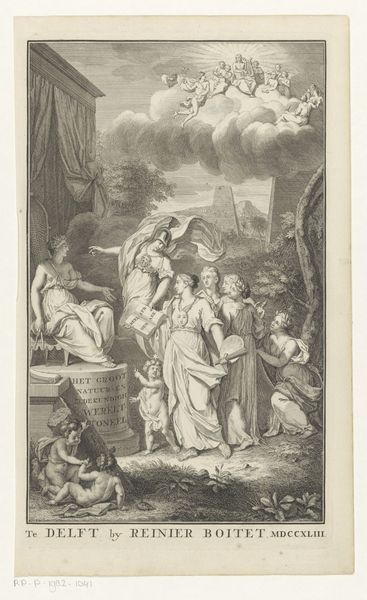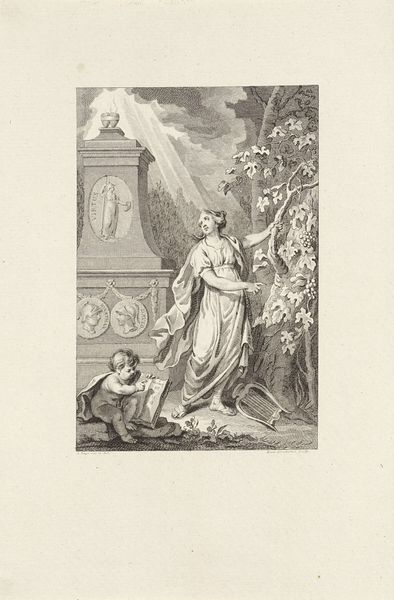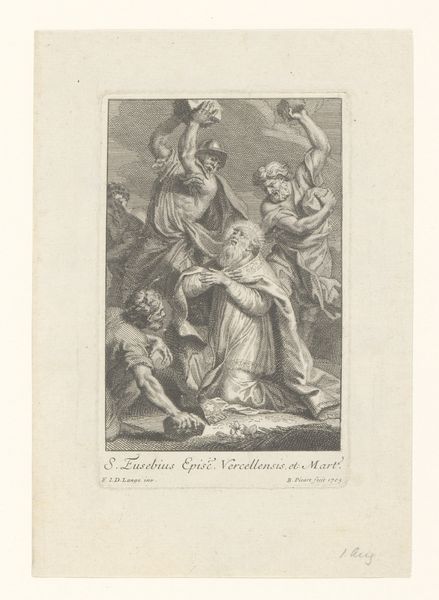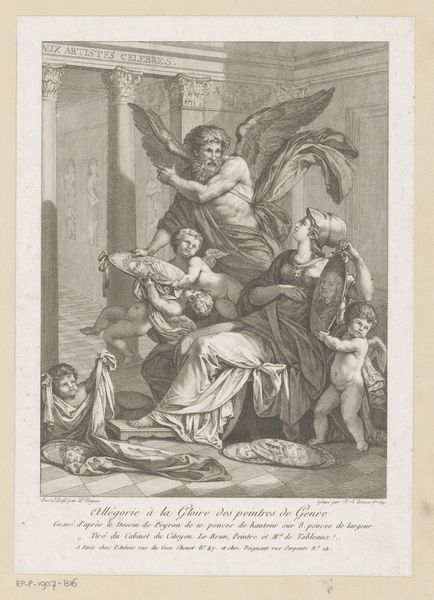
print, engraving
#
neoclacissism
#
allegory
# print
#
old engraving style
#
figuration
#
line
#
history-painting
#
engraving
Dimensions: height 217 mm, width 128 mm
Copyright: Rijks Museum: Open Domain
Curator: This engraving by Reinier Vinkeles, dating back to 1785, is titled "Geschiedenis schrijft de historie," which translates to "History Writes History." It resides here at the Rijksmuseum. Editor: It’s striking, even at first glance, how much neoclassical imagery is packed into such a small space. There is this airiness but also an incredible formality. The cherubs especially—they lend it a real allegorical weight, don't they? Curator: Absolutely. The piece speaks directly to the cultural moment of its creation. Neoclassicism, as you know, looked back to ancient Greece and Rome for inspiration. You see that reflected in the idealized figures, the architectural elements in the background, and the focus on reason and order. Engravings like these, widely distributed, shaped public perceptions of history and its role in society. Editor: That woman seated, quill in hand, recording events – she's History personified, isn’t she? Notice the other figure, standing behind her holding the…hat on a stick? Curator: Good eye. It's the staff of vigilance – reminding us of the diligence that must accompany the act of witnessing, recording and shaping the stories by which people subsequently define and direct themselves. The winged cherub trumpeting above her further elevates the historical writing process, proclaiming its enduring importance. Editor: The use of cherubs certainly amplifies its emotional punch. And do we suppose those infants playing are related to historical themes? Is one musical history and one geographic? Curator: Very possibly. Consider also that they're situated amidst symbolic items – globes representing geography, books signifying knowledge, architectural fragments reminding us of the remnants of past empires. It is a multi-layered appeal for the past to inform the future, shaping a renewed and righteous nation in the 18th century. Editor: Looking at it now with a different sense of the weight it carries…it does leave a more lasting impression. I suppose one must ask where those records, compiled vigilantly in one time, fall in the following eras. Curator: Precisely, which reminds us to remain thoughtful regarding the perspectives reflected in historical narratives, given they often reveal more about the societies crafting the stories, rather than the figures themselves. Editor: An apt reminder! The image invites us to continuously question what historical lenses and artistic forms can hide, and how.
Comments
No comments
Be the first to comment and join the conversation on the ultimate creative platform.
